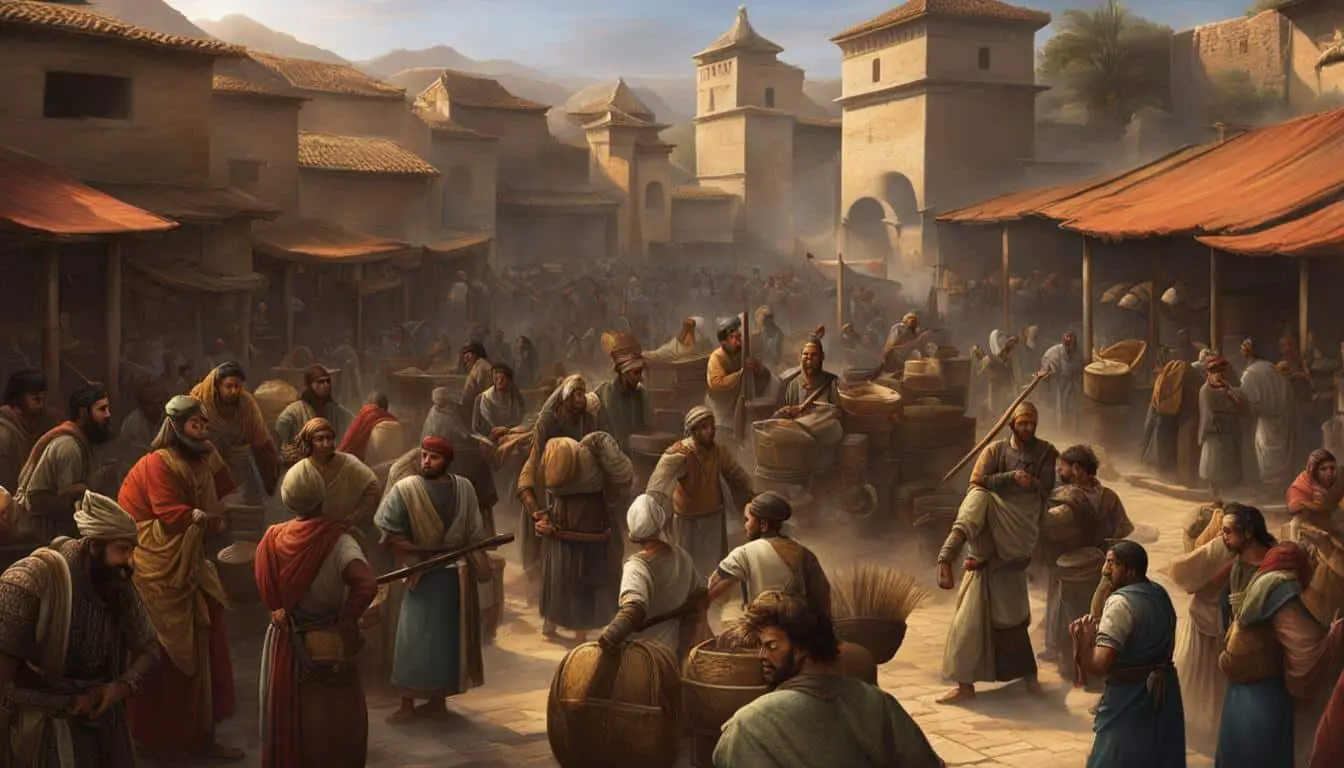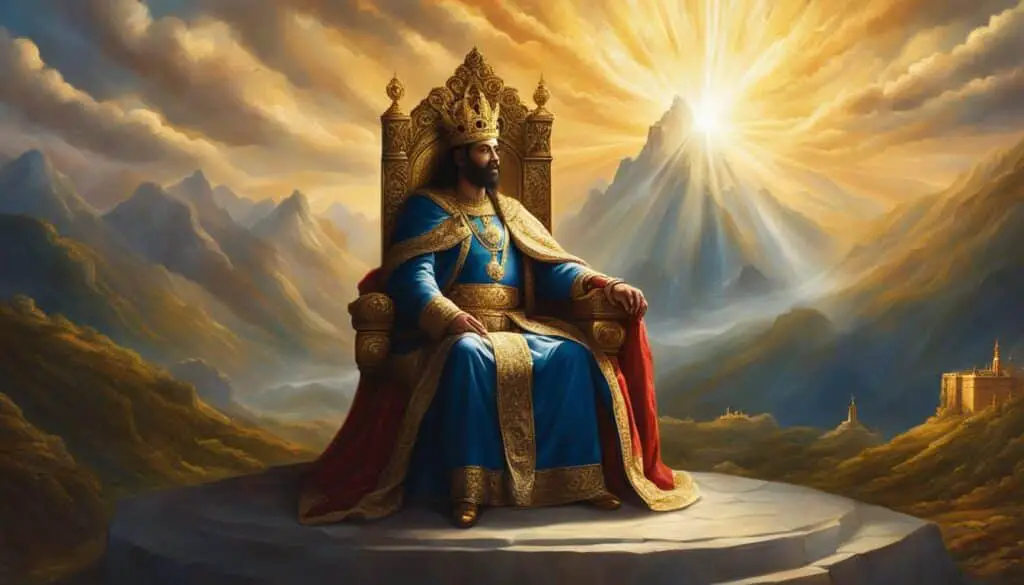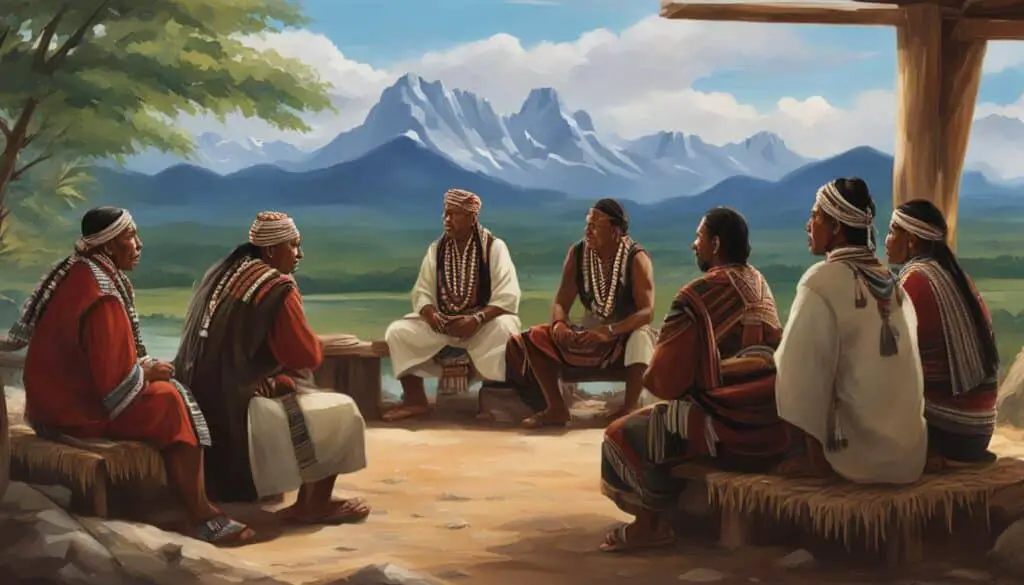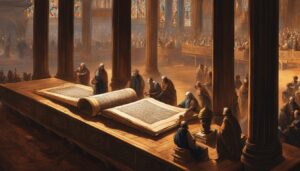
During the biblical era, the relationship between politics and religion was deeply intertwined. The political landscape was characterized by various ancient political systems, including theocracy, monarchy, and tribal governance. The Old Testament provides insights into the structure of government in biblical times, with rulers and leaders playing significant roles in shaping the political landscape. From the reigns of kings like David and Solomon to the establishment of priestly leadership, political power in ancient times was closely tied to religious authority. This comprehensive review explores these aspects of the political landscape during biblical times, shedding light on the complexities and dynamics of governance in this era.
Key Takeaways
- Political landscape during biblical times was deeply intertwined with religion.
- Ancient political systems in the Bible included theocracy, monarchy, and tribal governance.
- Rulers and leaders played significant roles in shaping the political landscape.
- Political power in ancient times was closely tied to religious authority.
- The Old Testament provides valuable insights into the complexities of governance during this era.
Theocracy: The Divine Right of Kings
In biblical times, the concept of theocracy prevailed, where political power was believed to be divinely ordained. Theocratic rule was deeply ingrained in the political systems of the time, with biblical rulers seen as God’s chosen leaders, wielding both political and religious authority. This divine right of kings influenced the political landscape, shaping the governance and leadership during biblical times.
The biblical rulers, such as David and Solomon, exemplified the divine right of kings. They were not only political leaders but also religious figures, serving as intermediaries between God and the people. Their authority and legitimacy stemmed from their perceived connection to the divine, giving them unparalleled power and influence. As a result, religion played a central role in the exercise of political power, and religious institutions were closely intertwined with the political structure.
“The kingly authority was absolute and uncontestable, derived from a divine grant. The king was not only a political leader but also a religious figure, leading the people in both secular and spiritual matters,” explains biblical scholar, Dr. Sarah Johnson.
Political Power and Religion
The intertwining of political power and religion in the theocratic systems of biblical times had far-reaching implications. It ensured the divine legitimacy of rulers, fostering a sense of unity and stability within society. It also reinforced the belief that political authority was ultimately accountable to a higher power, promoting a sense of humility and reverence among the rulers themselves.
Furthermore, the close relationship between political power and religion influenced decision-making processes. Rulers sought divine guidance and consulted religious leaders in matters of governance, considering religious laws and principles in their policies and rulings. Religion provided a moral framework for political action, guiding the rulers in their roles as both political and spiritual leaders.
Understanding the theocratic nature of biblical politics is essential for comprehending the complexities of governance and leadership during that time. It provides valuable insights into the divine sources of authority, the role of religion in political decision-making, and the interplay between faith and power in ancient societies.

Table: Comparison of Theocratic and Monarchial Political Systems
| Theocratic System | Monarchial System |
|---|---|
| Political power derived from divine authority | Political power derived from hereditary succession |
| Rulers served as religious figures | Rulers held both political and secular authority |
| Religion closely intertwined with political governance | Secular laws and governance |
| Spiritual guidance influenced political decision-making | Political decisions based on the ruler’s judgment |
Political Structure in the Old Testament: From Tribal Governance to Monarchy
The Old Testament provides a fascinating account of the political structure that evolved during biblical times. At its early stages, the governance of ancient Israel was organized around tribal leadership, with leaders emerging from different tribes to guide their respective communities. This form of tribal governance laid the foundation for the political landscape of the time.
Under the system of tribal governance, leaders were responsible for maintaining order, settling disputes, and representing their tribes in matters of significance. These leaders played a crucial role in maintaining cohesion within their communities and forging alliances with neighboring tribes. However, as the nation of Israel grew and faced new challenges, the need for a more centralized form of governance became apparent.
During this transitional period, the establishment of monarchy emerged as a significant political development. Monarchy replaced the decentralized tribal leadership with a central authority in the form of a king. This transition was marked by the anointing of Saul as the first king of Israel, followed by the reigns of other prominent kings such as David and Solomon. The institution of monarchy brought a sense of stability and unity to the nation, as well as a more defined chain of command.
| Characteristics of Tribal Governance | Characteristics of Monarchy |
|---|---|
|
|
The transition from tribal governance to monarchy represented a significant shift in political power and organization within ancient Israel. While the monarchy brought benefits such as centralized leadership and stability, it also presented challenges and potential abuses of power. The Old Testament provides a rich narrative of the political struggles, successes, and failures that accompanied this transformation.
This exploration of the political structure in the Old Testament highlights the dynamic nature of political systems during biblical times. From the early stages of tribal governance to the establishment of monarchy, the political landscape of ancient Israel underwent profound changes that shaped its history and civilization. Understanding these political dynamics provides valuable insights into the complexities of governance, leadership, and societal development during this era.

Conclusion
The political landscape during biblical times was a fascinating interplay of power, faith, and society. The ancient political systems that governed this era were varied, ranging from theocracy to monarchy and tribal governance. These systems shaped the political structure in the Bible and influenced the distribution of political power in ancient times.
One significant aspect of biblical politics was the concept of the divine right of kings, where rulers were considered to be chosen by God and held both political and religious authority. The biblical rulers and leaders, such as David and Solomon, were seen as God’s appointed representatives, and their actions carried great significance for both political and religious matters.
Over time, the political structure in the Old Testament evolved from tribal governance to the establishment of monarchy. The transition from tribal leaders emerging from various tribes to the centralized power of kingship had a profound impact on the political organization in biblical times. It brought about changes in leadership roles and dynamics, shaping the overall political landscape.
Studying the political landscape during biblical times provides valuable insights into the governance, politics, and leadership of that period. It allows us to understand the societal and cultural context in which the events of the Bible took place. By exploring the ancient political systems, the role of biblical rulers and leaders, and the transformations in political structure, we can gain a deeper appreciation for the complexities and dynamics of governance in the biblical era.
FAQ
What was the political landscape during biblical times?
The political landscape during biblical times was characterized by various ancient political systems, including theocracy, monarchy, and tribal governance. Rulers and leaders played significant roles in shaping the political landscape.
How were politics and religion intertwined during biblical times?
Politics and religion were deeply intertwined during biblical times. The concept of theocracy prevailed, where political power was believed to be divinely ordained. Biblical rulers, such as David and Solomon, were seen as God’s chosen leaders, wielding both political and religious authority.
How did the political structure evolve in the Old Testament?
The Old Testament provides insights into the evolution of political structure in biblical times. It started with early tribal governance, where leaders emerged from various tribes, and eventually transitioned into monarchy with the establishment of kingship.
What can we learn about the political dynamics in biblical times from the Old Testament?
The Old Testament provides valuable insights into the political dynamics and leadership roles during the biblical era. By understanding the political landscape during biblical times, we gain a deeper understanding of the societal and cultural context in which the events of the Bible unfolded.








